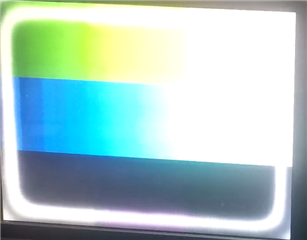Other Parts Discussed in Thread: AM3352
Use the LCD interface of AM3352 to connect the DS90C365A, and then connect the LCD screen.
Either TxOUT2+ or TxCLKOUT + is broken due to the problem of the interface cable. And the corresponding output differential signal will have problems
The external display is normal.
However, when switching to a specific interface, the display will appear flower screen, switch back to the display is normal.
By monitoring the output signals of TxOUT2+, it is found that when switching to a specific interface, the signal voltage decreases. This may be the cause of LCD receiver recognition.
TxOUT2+ or TxCLKOUT + these two line ,arbitrary break a signal line, why display can be normal? Also, why does a flower screen appear for a particular interface or color?
Thank you very much!


